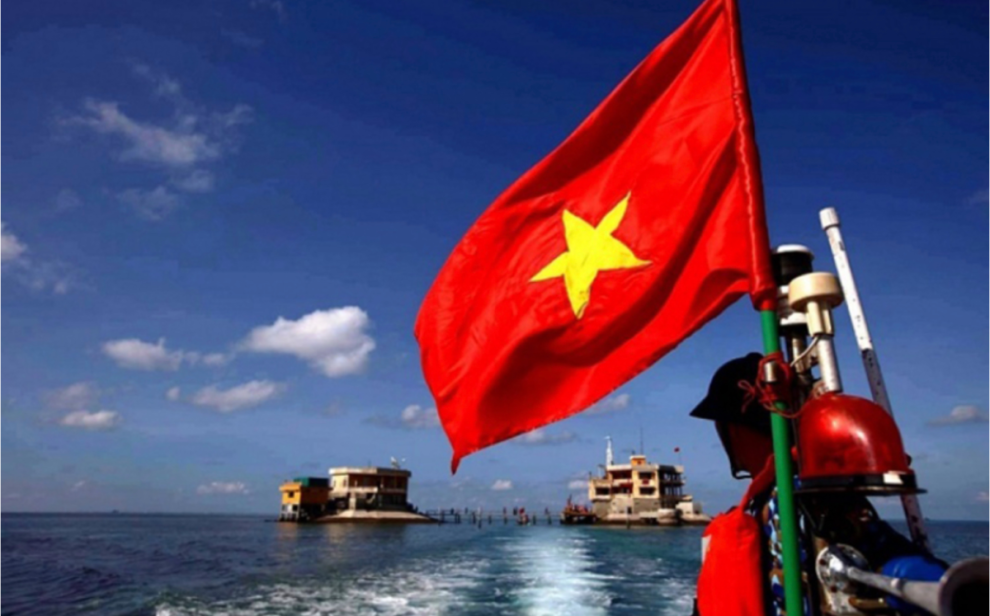Satellite imagery shows Vietnam rapidly expanding reclaimed land in contested sea but China’s response has been muted
Vietnam has quietly ramped up its military presence in the South China Sea, matching China’s island-building tactics to assert its territorial claims in the hotly contested maritime area.
This month, the Wall Street Journal (WSJ) reported that Vietnam has rapidly expanded its presence in the contested Spratly Islands, with high-resolution satellite imagery showing a tenfold increase in artificial land in the area over the last three years.
The WSJ report mentions that Vietnam’s expansion includes the construction of harbors, defensive trenches and potentially extended runways for military use. It notes that Vietnam’s actions mirror China’s, which previously built artificial islands equipped with observation towers, runways and other military infrastructure to assert dominance in the region.
WSJ notes that while China has aggressively enforced its claims against the Philippines, it has not yet responded to Vietnam’s activities.
The Asia Maritime Transparency Initiative (AMTI) noted in June 2024 that since November 2023, Vietnam has added 692 new acres across ten features, bringing its total dredging and landfill in the South China Sea to approximately 2,360 acres – about half of China’s 4,650 acres. AMTI says this rapid expansion marks a significant shift from three years ago when Vietnam’s total was just 329 acres.
In a September 2024 Chatham House report, John Pollock and Damien Symon mention that while Vietnam has not officially commented on these developments, they suggest that Vietnam’s actions are driven by a need to reinforce its strategic position amid ongoing territorial disputes with China and other claimant states.
Pollock and Damien point out that Vietnam’s expanded outposts could host long-range military aircraft, indicating a clear militarization intent. They mention that China has remained notably silent on Vietnam’s current reclamation activities, possibly due to ideological alignments with the latter’s new leadership.
They also say that China’s strategic silence over Vietnam’s reclamation activities may reflect Beijing’s focus on its standoff with the Philippines over the Second Thomas Shoal.
As for Vietnam’s preferred reclamation methods in the South China Sea, Monica Sato and other writers mention in a December 2023 report for the Center of Strategic and International Studies (CSIS) that cutter suction dredging involves slicing into coral reefs and pumping sediment to create landfills.
Sato and others point out that the method, used extensively by China since 2013 to build artificial islands, devastates the seabed, creating sediment clouds that smother marine life and hinder coral regeneration. They mention that unlike traditional clamshell dredgers, which cause less collateral damage, cutter suction dredgers inflict widespread destruction, removing essential reef structures and altering the marine ecosystem.
In conjunction with its accelerated land reclamation in the South China Sea, Vietnam’s military buildup sharply raises the stakes in its territorial disputes with China.
In a January 2018 article in the peer-reviewed Asia Policy journal, Derek Grossman said Vietnam has focused on modernizing its military, particularly its naval and air forces, to deter China from further encroaching on its territory.
He says that Vietnam’s military acquisitions, such as Russian Kilo-class submarines and Su-30MK2 fighter jets, alongside a network of anti-ship and surface-to-air missiles, increase Vietnam’s defensive capabilities, particularly in anti-access/area denial operations, making it costly for China to engage in any military conflict.
While China’s muted response to Vietnam’s actions may owe to Beijing’s focus on the US in the Philippines, Vietnam’s military limitations may also have contributed to Beijing’s stance.
In military terms, Grossman points out that Vietnam’s military still faces limitations regarding joint training, doctrine development and maritime domain awareness.
In a July 2021 report for the Singapore-based ISEAS-Yusof Ishak Institute, Nguyen Phuong points out that Vietnam’s military modernization has slowed significantly since 2016.
Nguyen identifies budget constraints as a significant challenge, as funds are directed towards other national priorities such as infrastructure and healthcare. He also highlights that the Vietnam People’s Army (VPA) prioritizes political action and propaganda over military action, which also impedes modernization efforts.
Additionally, Nguyen points out that the anti-corruption campaign led by former and now-deceased Communist Party General Secretary Nguyen Phu Trong has disrupted military procurement by dismantling corrupt networks within the VPA, potentially impacting Vietnam’s capability to counterbalance China’s expanding military influence.
Vietnam’s approach to handling its South China Sea territorial claims may also be a factor in China’s relatively low-key response compared to its aggressive actions toward the Philippines.
In a May 2024 article for the National Bureau of Asian Research (NBR), Nguyen says that Vietnam’s approach to managing tensions with China has been discreet and pragmatic, reflecting a balancing act between accommodation and assertiveness.
Nguyen says that historically, Vietnam tended to take a submissive approach towards China due to internal conservative influences, but it has increasingly sought support from the Association of Southeast Asian Nations (ASEAN) and the US to push back against China’s assertiveness when needed.
Despite those moves, he says that Vietnam’s strategy remains cautious, avoiding escalatory legal actions or overt alignments with major powers.
On the other hand, Nguyen says that China views Vietnam as a pragmatic rival, recognizing the need for a cooperative relationship but prioritizing territorial interests over socialist solidarity.
He points out that China has employed a mix of coercive tactics, including gray-zone actions, to test Vietnam’s resolve while recalibrating its approach when Vietnam shows signs of defiance, fearing Vietnam’s potential pivot to the West and US.















